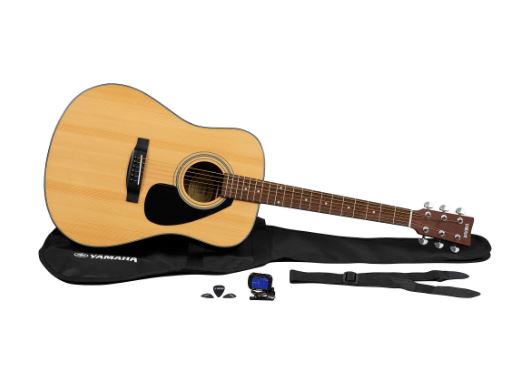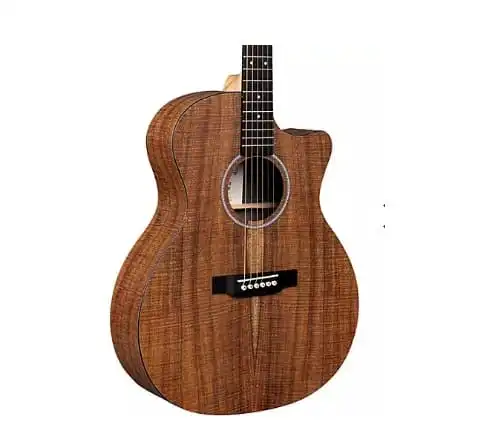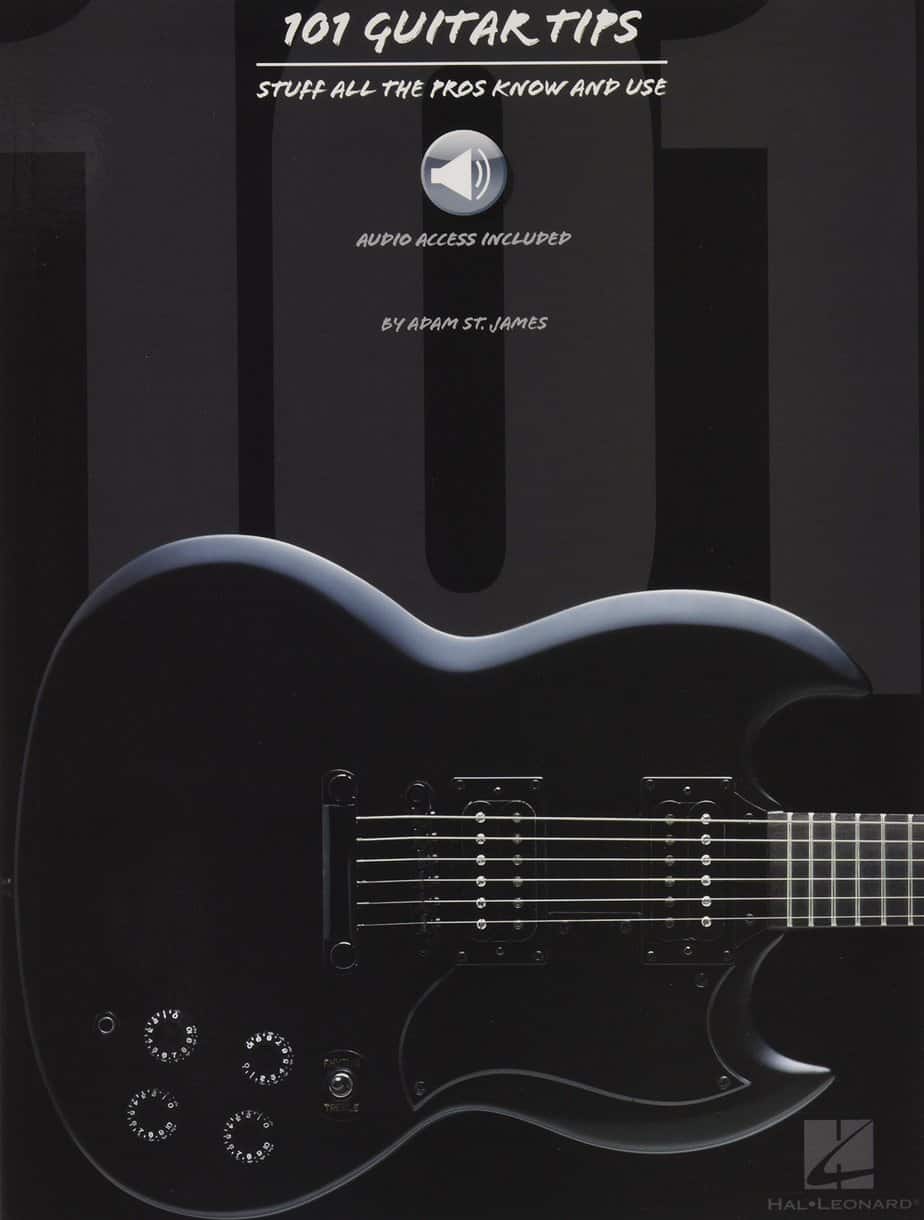The idea of learning how to play the guitar can be very intimidating, especially if this is the first musical instrument you’re learning how to play. It’s totally normal for you to have a lot of questions about the entire process, but we’re here to help push you in the right direction on your guitar journey!
In today’s guide, we’re going to discuss:
- What gear you’re going to need to get started playing
- An easy way to start learning chords with minimal confusion (even if you have no music experience)
- How you should your guitar pick
- The differences between strumming rhythmically and musically
- The best methods of practice for beginners
- How to find the best guitar teacher for your personal needs
- Answers to some of the most commonly asked questions by guitar beginners
- And we’ll give you some pro tips to use scales for solos when you’re ready!
Let’s get started!
Step One: Find a guitar that’s right for you
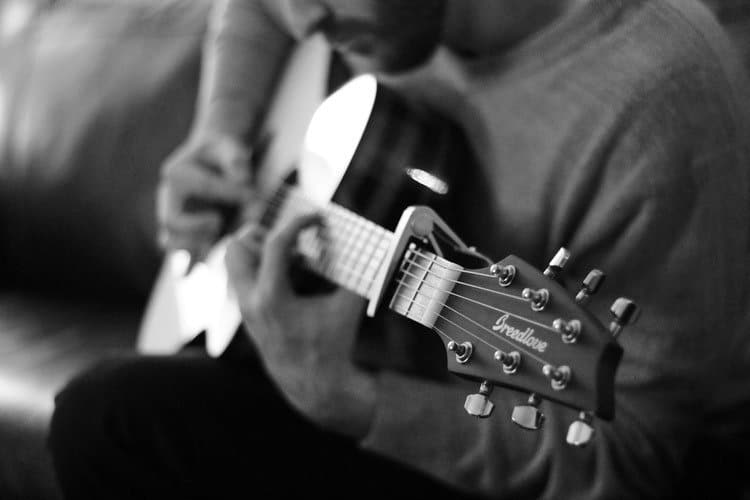
The options for guitars targeted towards beginners is almost endless, and considering that no guitar plays the same, narrowing down what type of guitar you want to purchase can be a difficult choice to make. The type/brand/make/model of guitar that you purchase will have a huge influence on your development and progress as a musician, as there are some guitars out there that are easy to play and there are other guitars that are more difficult to play.
If you happen to end up investing your money into a guitar that’s hard to play, you’re going to have a difficult time finding a passion for playing guitar. While it’s true that it’s better to have a guitar than it is to have no guitar at all, you’re going to want to make sure that you’re investing your money into a guitar that fits your body size and hand size. A guitar that properly fits your body is going to make a huge impact on your guitar journey, so don’t try to cheap out by buying a guitar that isn’t going to fit your body or your hand sizing.
How much money should I spend on a guitar?
As a
Just as a personal recommendation, I wouldn’t recommend spending less than $150 on a guitar, but I would highly recommend staying away from the unbranded guitar kits that you find on eBay or Amazon. These kits aren’t worth your money and will bring you nothing but frustration, which isn’t how you want to start off your guitar journey. I also always recommend going to a guitar store to try playing guitar before you commit to purchasing; even if you don’t have any experience playing, at least go in-store to try holding the guitar to see if it feels comfortable.
What equipment will I need to play the guitar?
There are a few essentials that I would recommend getting into your gear collection before you really start trying to learn and play the guitar, you should invest your money in:
- A guitar tuner
- A capo
- A guitar strap
- Guitar picks (we recommend a pick that is between 0.65-0.73 in thickness)
- If you’re investing in an electric guitar, you will also want to pick up a small practice amp and a cable
The right type of equipment will really make a huge difference in your technique and the tone of your instrument. As you develop as a musician, you can always add more equipment to your arsenal, but the above-mentioned pieces of equipment are what I would strongly recommend investing in for the beginning of your guitar journey.
Do I need to use a guitar pick?
Besides shopping for a guitar (and an amplifier, if you’re playing an electric guitar of sorts), going shopping around for a pick is going to be one of the most overwhelming shopping experiences you will go through when you’re first getting introduced to the guitar. Just on the selection of sizes, thicknesses, shapes, and types of materials that are used in the creation of a pick, it’s very easy to become lost in the options of choices pick manufactures give you.
The longer you play your guitar and the more familiar you become with your instrument, you may find that a certain style/type of pick works best for what you personally need. However, I would recommend checking out plastic picks if you’ve never used a pick before. Plastic picks are a great (and popular) choice to make because they’re very flexible and easy to grip; I would also personally recommend going for a medium thickness (anywhere between .72mm to .88 mm) as it’s going an easy pick to hold, without being too cumbersome.
Do I need a guitar strap?
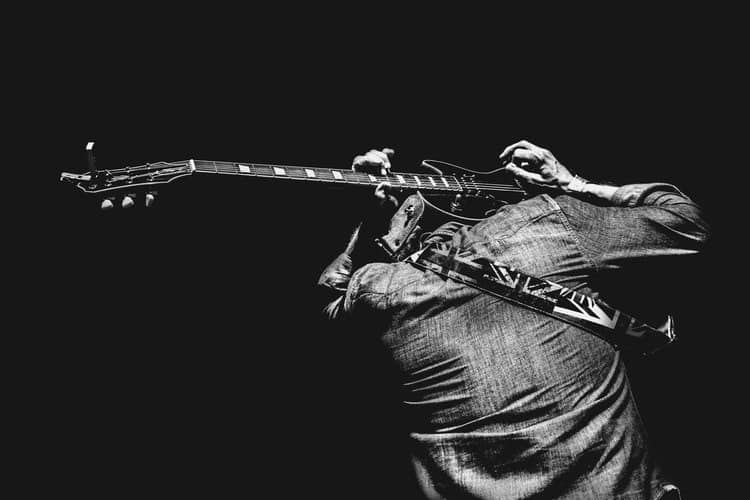
A guitar strap is a crucial accessory to pick up if you’re planning on playing your guitar while you’re standing up. Just like guitar picks, there are a lot of different types of materials and designs that you can choose from for a guitar strap. As a beginning musician, you shouldn’t get caught up in the beautiful details of a guitar strap, but should more shop around for a strap that’s comfortable for you to play with.
If you do plan on playing standing up, I would recommend buying a guitar strap that is at least two inches wide with extra neoprene (padding), as this extra padding will help to reduce neck and shoulder strain.
Do I need a guitar cable?
You will only need a guitar cable if your guitar is an electric guitar, an electro-acoustic guitar (an acoustic guitar that can be amplified), or a bass guitar. In terms of cable length, I would recommend starting out with an instrument cable that is less than 20 feet, as a short cable will help to decrease signal and noise loss.
Step two: Discover how to tune your guitar
A guitar that’s worth the financial investment is a guitar that holds its tuning. But, how do you know when your guitar is in tune?
That’s where a guitar tuner comes into play; there are four main types of tuners, which are:
- Vibration-based tuners: Use the vibrations that your guitar creates and tunes via the vibrations that the tuner picks up. Vibration-based tuners can be used in loud environments.
- Pedal tuners: Are often used with electric guitars, bass guitars, and electro-acoustic guitars.
- Microphone-based tuners: Listen to the notes that your guitar produces, can be plugged into electro-acoustic and/or electric guitars. Not a great choice to make if you’re looking to play in a loud environment, as microphone based tuners pick up other noises, which effects your tunings.
- Smartphone apps: These are a great option if you’re wanting to turn your guitar for super cheap and aren’t interested in lugging around extra gear. There are a ton of free tuning apps available for download off of iTunes or Google Play store.
The more money you invest in a guitar, the more likely you are to get an instrument that has a built-in tuner in it, which can be super handy to have.
Step three: Learn to identify your strings
The problem that a lot of beginners run into when first starting to learn how to play is that they’re so excited to dive into playing music, that they often neglect to actually learn the parts and pieces that come together to make their guitar.
Learning how to properly identify the strings on your guitar will make the entire learning process so much easier (and less frustrating) down the road. The identification process of your guitar strings isn’t too complex and once you get it down, it’s something that will stick with you for the rest of your guitar journey!
Plus, learning the identification of your guitar strings will make it a lot easier for you to properly communicate with a guitar teacher and/or other musicians, which is really important to get down especially if you want to be in a band!
Starting from the thickest string on your guitar and going to the thinnest, the guitar string names are: E, A, D, G, B, E. The thickest string is going to be your 6th string (E), while the thinnest string is going to be your 1st string (e).
Here are a few guitar string mnemonic acronyms to help you remember the names of your strings:
- Every Apple Does Go Bad Eventually
- Elephants and Donkeys Grow Big Ears
- Elvis Always Dug Good Banana Eating
- Every Boy Gets Dinner At Night
Whatever is easier for you to remember is the one that you should repeat to yourself, just to get in stuck in your head so you don’t ever forget!
Which order do guitar strings go in?

The most confusing part of identifying guitar strings for beginners is not having the guitar strings labeled as ‘1-6’, but rather having them labeled as ‘6-1’. Naturally, the thickest string is the string that most people strum first, which is why a lot of musicians think that low E string is going to be the 1st string. But, that low string is actually going to be identified as your ‘6th string’, which the 1st string on your guitar is the high E string.
Further Reads:
- How to Change and Replace Guitar Strings by Yourself
- 4 String Bass vs. 5 String Bass — Which Guitar to Choose and Why?
- How to Play Guitar like John Mayer
Where do I put my fingers on a guitar?
After learning about what the string names are and the placement of those strings, you will also be able to understand what fingers go on which strings! You’re going to be using your index finger, your middle finger, your ring finger, and your pinky finger to hold down strings, as your thumb will be on the back of the neck of the guitar to help balance the instrument. Here’s a little graphic to help you get a better understanding of where you place your fingers!
Step four: Learn a few basic chords
Yay, now we can start getting into the fun part of the guitar, which is actually starting to learn some chords and get to playing! No matter what genre of music you’re looking to play, it’s absolutely necessary that you learn how to play a few basic chords, as chords as an essential part of understanding how to successfully play the guitar.
You may have already spent some time trying to learn how to play some chords, which is totally cool! One of the most amazing parts about learning basic chord structures is that when you get into playing more difficult chords (like B or F), that you will have a better understanding on how to simplify the difficult chords that you struggle to achieve.
Learning how to play a basic chord breaks down to figuring out what to do with your left hand and your right hand. Assuming that your right hand is your dominant hand, your right hand is going to be the hand that strums your guitar, while your left hand is going to be on the fretboard of the guitar (the hand that fingers out the chords). If your left hand happens to be your dominant hand, your left hand is going to be the hand that’s strumming and your right hand will be the hand that’s fingering all of the chord positions.
Just as a quick note, understanding that lining your fingers up on the proper strings isn’t the only step you need to get fluidity in your playing when you’re switching chords. Also, if you’re having problems with your chords not playing and you’re getting a stumped sound out of your instrument, check the positioning of your fingertips. You should be using the tips of your fingers and not the pads of your fingers, so if you are hearing a stumped sound of your guitar, chances are your fingers are touching other parts of the strings that they’re not supposed to be touching.
It’s totally okay that your playing sounds choppy when you’re first starting out, but if you keep at practice, you will soon find that your fingers are switching chord configurations with letter effort!
Further Read:
- What are Power Chords: An Introduction That Can Make You Better
- How to Easily Read Guitar Tabs: Tips for Reading Guitar Tabs the Easy Way
Step five: Get introduced to strumming your guitar
There are so many different moving parts that go into playing the guitar, but depending upon what type of musical experience you have (if any), learning how to follow rhythm may be the hardest part for you to master. There is absolutely no song in the world that doesn’t have a rhythm, so while you may be able to get away from playing songs that don’t feature a melody or a harmony, but you won’t be able to get away from playing music with rhythm.
A great thing about the guitar is that it doesn’t require a lot of upper arm movement because you mainly depend on your wrist to strum your guitar. Don’t get caught up into the common mistake that a lot of beginners make, where they use their whole arm to strum their guitar with an extreme amount of power.
You don’t need to strum your strings hard, even if you’re looking to blast your audience away with the sound. Just put a little bit more force behind your wrist and you’ll notice a difference in the dynamic that you’re producing but at no point should you ever need to use your entire arm to strum your guitar.
It’s also important that you come to understanding that while it’s a lot of fun playing loud and bold, that you should get the hang of understanding rhythm before you go and start playing your tunes at a thunderous volume. Learn how to strum in time with a beat, as this concept is going to be what makes you sound like a musician who knows what they’re doing, rather than just being someone who can’t play in time and just plays blaringly.
Read our full list of top most popular songs to learn guitar.
Step six: Develop a proper pick holding technique
When you’re first starting off on your pick journey, it’s a really great idea to get yourself a variety of different picks that consist of different sizes and materials to play around with. It’s almost safe to say that you can’t overbuy picks, as they’re really small and are easy to lose, so it’s always better to have too many rather than not have enough.
It’s really common for beginning guitarists to prefer a softer pick when they’re first starting out playing, so don’t let an experienced guitarist talk you out of getting softer picks. The more experience that you get under your built, the more you’ll find that a heavier, harder pick will be what gives you the most feeling of control.
I would recommend getting started with a pick that is between 0.65-0.73 in thickness, as a pick that’s any thicker than this will make it more difficult to control your fluidity when you’re strumming.
When holding your pick, I strongly recommend holding your pick in between your thumb and your forefinger, as this is the most natural and comfortable way to hold your pick (some people argue holding with your middle finger and your thumb, but it doesn’t feel as natural). You should hold your pick far down enough so that just the tip (the pointy end) of the pick is sticking out from your fingers; holding your pick back too far won’t provide you with enough control of over your pick, making it easier to lose control of.
While holding your pick in the correct place doesn’t seem like it would make a big difference in your playing, getting a solid understanding on how to properly make contact with your guitar will make a huge difference in overall experience with your instrument.
Another common mistake that beginners make when first starting out their journey is that they will find the easiest way that they can to strum/pluck their guitar, which typically means that they strum with their fingers or their thumb. It’s totally okay to play with your fingers, but playing with your thumb is the most limiting bad habit that you can develop while you’re learning how to play.
As a well-versed musician, it’s incredibly important that you develop the ability to play with both your fingers and a pick, so make sure that you’re practicing with both techniques.
Step seven: Learn how to practice in a healthy manner
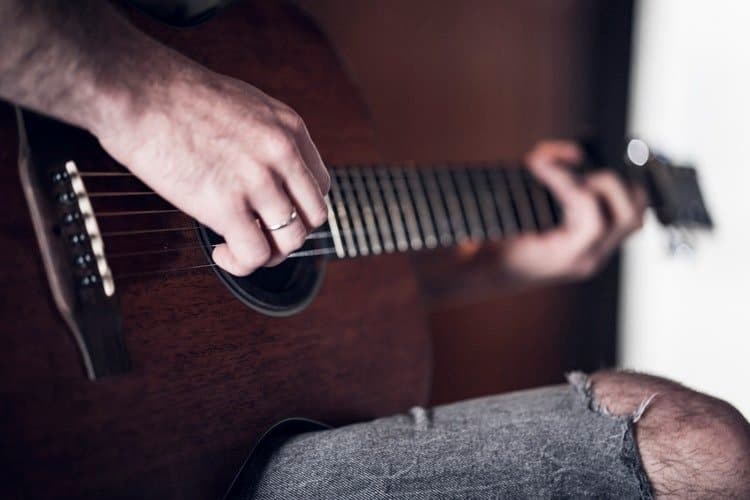
If your dream is to be the world’s greatest guitarist, you don’t have to be born with a secret talent or have really long fingers to be able to make your dream achievable. Developing a healthy practice schedule is what’s going to make your dreams possible! But what really makes the difference in your long-term goal is how you practice and how often your practice is what’s going to make the biggest difference in your guitar journey.
How often should I practice?
Practicing at least a half hour every day is what I recommend, as a half-hour practice is going to give you time to:
- Warm up
- Run through your scales
- Practice chord fingerings or different strumming techniques
- Work on learning a new song
However, even just practicing five or ten minutes a day on the days that you don’t have a lot of time is a lot better than not practicing at all. But at the same time, don’t try and take a week’s worth of practice and cram it all into one day.
It’s totally okay if you miss a day or even a few days because life does happen and unforeseen circumstances will pop up. This doesn’t mean that you’ll be okay if you miss weeks after week’s worth of practice, as you will be a little rusty getting back into the game. This also doesn’t mean that you should cram a few days of practice into one day, as a huge list of to-dos will certainly get your mind overwhelmed and limit the amount of information that your brain is absorbing.
It’s a lot easier and a lot more productive to get your fifteen minutes to half-hour practice on a daily basis, as breaking off your practices into chunks will make your learning experience a lot more manageable, easier to understanding, and less overwhelming.
Step eight: Find a guitar teacher or program
While there are a lot of great tutorials on YouTube, tutorials on YouTube are better for learning an individual song or an easier way to finger a certain chord rather than to actually learn guitar. Don’t get me wrong, there are some channels on YouTube that do a really great job of breaking down guitar basics and music theory, but if you’re looking for someone to give you a concrete lesson that’s covers everything that you need to understand as a
One thing that a lot of beginners expect is that all guitar teachers are the same, so they can go to any local guitar store/lesson and think that any teacher available will work for them. Just like a pair of sneakers isn’t going to be the most comfortable choice for all people, not all guitar teachers are going to be the perfect fit for you.
It may take you going through five or six guitar teachers to find the perfect match for you, so don’t feel discouraged if you haven’t found the exact fit yet! When you are ‘shopping’ around for a guitar teacher, it’s a great idea to have a set of goals in your head for you to share with your guitar teacher, as this will help your guitar teacher get a better understanding of what you’re looking to learn. Here are a few example goals to have in mind for you to share with your teacher:
- I want to play in a band or I want to cover songs on YouTube
- I want to play country music or I want to play heavy metal
- I want to learn how to read sheet music or I want to
- How to Rea
- I want to play lead guitar or I want to play rhythm guitar
The term ‘I want to play the guitar’ means something different to everyone, as learning how to play is a very personal experience. When looking around for a new guitar teacher, don’t just tell your teacher that you want to play the guitar. Instead, discuss with your teacher some goals that you want to achieve on your guitar journey, as that will help your teacher to get a better understanding of what success looks like to you!
Next Step: How to Learn Scales and Use Them For Solos
Once you’ve got the basics down as a
Learn to “Connect the Dots” with Guitar Scales
So, when it comes to getting a hang of scales, I swear by this approach I like to call “connect the dots.” This is what is going to make you the stellar guitar player you want!
It’s pretty straightforward—pick a scale, let’s say the A minor pentatonic, and just jam along with a drum machine or a metronome. Start slow with whole notes, then kick it up a notch with half notes, followed by quarter notes, and then eighth notes. It’s like having a rhythmic conversation with the scale, and trust me, it’s a game changer for feeling the groove.
These are the kind of exercises I take
Ride the Rhythm to Master Guitar Techniques
Now, once you’re cozy with the scale, it’s time to sprinkle in some guitar techniques. I love using the longer rhythms to work on my bends and vibrato—it’s like adding a bit of spice to a dish. And for the speedy stuff like hammer-ons and pull-offs, those eighth notes are your best pals. It’s all about keeping it clean and rhythmic, you know?
Crafting Solos with Motifs and Pacing
Alright, transitioning to soloing was a journey, as a
First off, I started restricting myself to just a handful of notes to create these tiny melodic phrases, or motifs as I like to call them. Pacing is a big deal. Imagine the sound of Jimi Hendrix without proper pacing. He was a master at telling a story with the guitar.
Surrounding my motifs with a bit of space not only made them stand out but also caught the ear of my bandmates and the crowd. It’s like giving everyone a moment to digest the melody before diving back in. Trust me, a little pacing goes a long way in making a solo resonate with the audience.
Further Reads:
- Logic Pro vs Pro Tools – Which is the Best DAW for You?
- The Best Jamstik Alternatives – Make Guitar Learning Fun!
- The Best Six YouTube Channels for Free Guitar Lessons
- Reaper vs. Audacity – Which is the best DAW for you?
- Reaper vs Ableton: Choosing the Best DAW for Professional Audio Production
- Gibson Learn and Master Guitar Lessons: My Comprehensive Review
- Jamorama Review (2022 UPDATE): Is Jamorama Worth Your Time and Effort?
- Ultimate Justin Guitar Lessons Review (2022 UPDATE): Worth it, or NOT?
- Is Guitareo the New Standard for Online Guitar Teaching?
How long will it take for me to learn the guitar?
Whenever you start the journey of learning a new skill, we all possess the same desire of wanting to be skilled at the new skill we’re working on developing. All good things take time, so your insane guitar skills aren’t going to develop overnight or within one day of practice.
If you’re struggling (or feel like you’re struggling) to learn the guitar, realize that we all learn at different paces and that the most important thing you can do is be patient with yourself! Getting frustrated will only lead you to develop a dislike for the guitar, whereas as a newbie on your journey, you should want to start developing a passion for playing.
There is no sort of time period that you have to learn the guitar in and the journey to mastering the guitar isn’t a race! Take a second and realize that there isn’t any need to getting frustrated with yourself. Struggling to master a concept or a task is all part of the learning process, so what you’re struggling with is completely normal.
This also means that you shouldn’t get discouraged by other people! Sure, there are bound to be guitarists who are better at one skill than you are, but at the same point, you have the potential to be better than that same guitarist in another area. Don’t judge your playing capabilities against someone who has been playing for longer than you have- that’s just a killer of hope.
Nobody gets good at guitar just by picking up and playing, so being successful (whatever you think a successful guitarist is) takes time, patience, and practice!
Am I too old to learn the guitar?
Absolutely not, you could never be too old to learn the guitar! No matter if you’re just starting high school or if you’re celebrating your retirement, there is absolutely no age that you could be that would make you too old to learn the guitar. Also, no matter what age you are, learning the guitar can be a promising and rewarding hobby to get under your belt, which may give you a whole new perspective on what you’re capable of!
Other tips to help make your journey a little easier:
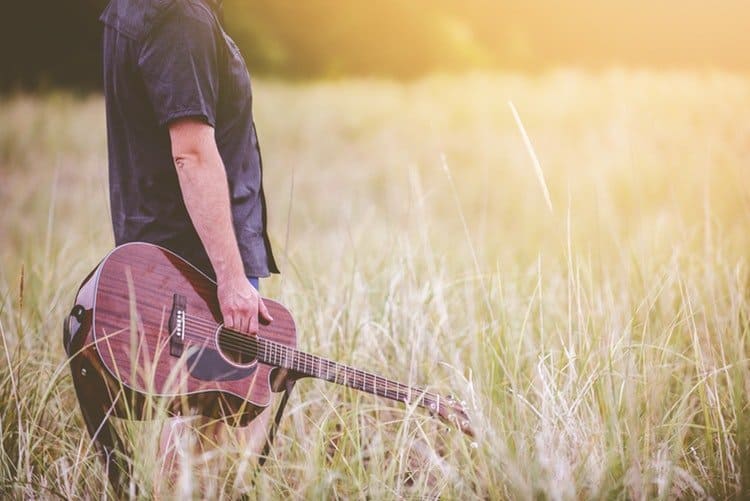
Use a metronome
This can be really difficult to follow along with at first, but using a metronome will help you to keep a sense of steady rhythm, while also helping you to figure out the timing of your notes. Make sure to set your BPM (beats per minute) to a slower tempo (beat) when you’re first starting out a new song!
Don’t forget about your dominant hand
While mastering chord fingerings is really important, working on strengthening the skill of your dominant hand is often forgotten about. Just pick an easy chord to press down on your left hand and work on any finger-style playing or using a pick while playing the same chord. Practicing with your right hand will really help when it comes time for you to nail complex solos that have a tricky strumming pattern!
Take a second to actually listen to some music
When you’re feeling like your hands are getting tired, your fingertips are sore, or your wrists are starting to feel strained, take a break and listen to some music! Don’t worry- it’s totally normal for your fingers to hurt a bit.
However, if your wrists are starting to hurt, you don’t want to take the chance of damaging any ligaments or tendons in your hands, so don’t forget to rest. Listening to music and listening to what other popular guitarists do with their sound (or how they implicate the technique they’re most famous for) can help you to find your own individual sound!
Train your left hand with silent playing
Want to watch a movie but don’t want to make the noise that comes with playing the guitar? Silent playing or silent rehearsing is a method of practice where basically the guitarist just moves their left hand across the fretboard, fingering different chords, but doesn’t strum with their right hand. This is a great practice technique to use if you’re looking to increase your chord switching speed!
Read More:
- How to Fix That Annoying Fret Buzzing: Best Tips I Can Give You
- Best Tips for Playing Guitar with Small Hands
- Top 5 Best Guitars for Small Hands [2019 UPDATE]: Acoustic and Electric Options
At the same time…
Don’t grip too hard with your left hand
Whatever you do, DO NOT wrap your thumb about your neck board so that your thumb is pressing down the 6th string on your guitar. It’s a natural reaction to want to do this because as a
This is going to feel weird at first and your wrist may feel strained, but it’s much better to struggle to develop a habit than it is to try to break a bad habit of using your thumb to press down the 6th string.
Go slow!
Trying to learn to play at a really fast pace isn’t going to help build muscle memory or help your brain retain the information any longer. A great technique is about accuracy, which is something that you develop by playing at a slow tempo. When you learn to play properly, speed naturally follows along!
Make a list of your favorite songs
Practicing isn’t much fun if you’re only doing scales and chord progressions. Learning to cover your favorite song, even as a
Go with lighter gauge strings
Starting off with a lighter gauge string will mean that there’s less tension on the neck of the guitar, which makes the strings easier to press down for beginners. For acoustic guitar players, I would recommend buying a set of .009 to .042 strings and for electric guitar players, I would recommend .010 to .046 gauge strings.
Don’t take the lazy way with fingering
While a certain fingering may feel a little bit easier for you to accomplish using certain fingers, don’t take the lazy way when it comes to proper fingerings. Later on down the road, you may come to the realization that the chord that you’ve been lazy fingering is now nearly impossible to play with a seventh or ninth variation added onto it. Just do yourself the favor and practice the fingerings that you struggle with the most, so you don’t develop bad habits down the road when you need to use proper fingering the most!
Further Reads:
- Jam Play vs. Guitar Tricks- Which Platform Is Better To Learn On?
- Yousician vs Guitar Tricks [2019 UPDATE]: Which One is Better?
- The Jamstik+ Review – A Guitar For Studio Musicians
- Yousician vs. Jam Play Online Lesson Comparison: Which One Would You Love More?
- Guitar Tricks vs Justin Guitar Online Lesson Comparison: Which is Best [2019 UPDATE]?
- Jam Play vs Guitar Tricks [2019 Update]: Which Platform Is Better To Learn On?
- TrueFire Review (2019 UPDATE): Is TrueFire Worth the Money for Aspiring Guitarists?
Conclusion
Learning the guitar can be a tricky hobby to get into, but it’s a lot easier to play the guitar if you work on building correct playing techniques and a healthy practice routine when you’re first starting out! Hammering out the simple, common mistakes that a lot of beginners make and nailing the basic techniques will make the rest of your playing journey an easy ride!
Here are some recommendations for your starter kit:
The Squier Affinity Strat Pack includes everything you need to start rocking right out of the box.
The 20W Champion 20 features a single 8" Special Design speaker, with great amp voices and effects that make it easy to dial up just the right sound - from jazz to country, blues to metal and more.
Respecting that long and storied heritage, the Fender Player Series Telecaster puts a modern edge on the authentic Tele tone and vibe.
The Yamaha GigMaker Guitar Package is built around the F325D acoustic guitar with die-cast chrome tuners and a spruce top.
The special X Series GPCX Grand Performance Acoustic-Electric Guitar has a powerful, rich tone, with all the sustain you have come to expect from a Martin guitar.
This all-in-one bundle has all your favorite BOSS accessories. Use the blue microfiber polish detailing cloth and guitar detailing spray to keep your instrument looking like new. The BOSS branded medium guitar picks and black nylon guitar strap ensure you’ll look and play great.
101 Guitar Tips contains invaluable guidance on everything from scales and music theory to truss rod adjustments, proper recording studio set-ups and much more.
Regardless of your playing style, D'Addario has a string set that's right for you.
Safe, sound and style. There's no reason that a sleek, smartly-designed gig bag can't keep your precious instrument secure as well.
Further Guides and Resources
Online Courses
Self-Teaching Resources
- Best Jamstik Alternatives
- Best Sites to Get Free Guitar Music
- Best Guitar Books to Study
- Tremolo vs Vibrato
- What are Power Chords [Explained]
- E Major Guitar Scale Guide
- F Major Guitar Scale Guide
- G Major Guitar Scale Guide
- Drop A Guitar Tuning guide
- Blue Licks Guide
Software and Tools
Guitars
- 14 Of The Best Guitars On The Market For Kids (Get Them Jammin’ Young!)
- Do you need a Jazz Guitar to Play Jazz Music?
- Michael Kelly Review





